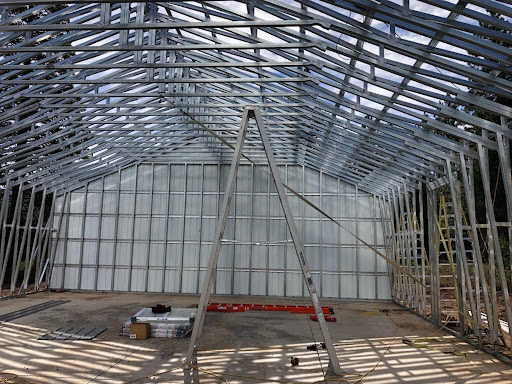
In the vastly complicated realm of construction engineering and architecture, the pursuit of safety and resilience against disaster events will always be an ongoing challenge, and a balance between cost, necessity and capability. The increasing frequency and severity of natural calamities such as earthquakes, hurricanes, fires, and other catastrophic events have underscored the need for buildings that can withstand these forces and protect lives and property. Amidst this urgency, steel framing has emerged as a frontrunner in fortifying structures and ensuring enhanced resilience.
Structural steel frames have become pivotal in reshaping the landscape of building safety. Unlike traditional construction methods that often utilize wood or concrete alone, steel offers unparalleled strength, durability, and flexibility, making it an ideal choice for disaster-proofing buildings.
One of the key advantages of structural steel frames lies in their innate strength. Steel possesses exceptional tensile and compressive strength, enabling it to bear heavy loads without succumbing to deformation or failure. This inherent robustness forms the foundation of a building’s ability to withstand the forces exerted during earthquakes, hurricanes, or extreme weather events.
During seismic activities, buildings face immense lateral forces that can cause structural damage. However, if designed correctly, steel’s ductile nature allows it to flex and absorb energy, mitigating the impact of seismic waves on the building’s integrity. This flexibility not only ensures the safety of occupants but also minimizes the need for extensive repairs post-disaster, reducing downtime and costs.
Moreover, steel framing in the form of metal stud walls and structural framing excels in fire resistance, a critical aspect of disaster-proofing. While wood structures can be highly susceptible to fire, steel is non-combustible and maintains its structural integrity even under extreme heat conditions. This fire-resistant property significantly enhances the overall safety of a building and reduces the spread of flames, providing invaluable life-saving time for evacuation and firefighting efforts.
Beyond its strength and fire resistance, the versatility of steel framing contributes significantly to disaster-proofing. Prefabricated steel components can be designed and manufactured to strict tolerances off-site, ensuring consistency and accuracy in construction. This precision minimizes on-site errors, accelerates construction timelines, and reduces the overall environmental impact, aligning with sustainable building practices.
Furthermore, steel’s recyclability makes it an eco-friendly choice. Its ability to be repurposed and recycled at the end of a building’s lifecycle reduces waste and contributes to a circular economy—a crucial aspect in today’s sustainable construction practices, particularly for larger corporations with policies and guidelines to meet.
In the quest for disaster resilience, engineering advancements continue to refine steel framing techniques. Innovations such as advanced seismic design principles, bracing systems, and enhanced connection methods further bolster the capability of steel-framed structures to withstand diverse disaster scenarios.
As the world grapples with the growing threats posed by natural disasters and climate change, the adoption of steel framing stands as a beacon of hope for building safety and resilience. Its proven track record in withstanding adverse conditions, coupled with ongoing technological advancements, positions steel as a cornerstone in the pursuit of creating disaster-proof structures that prioritize human safety and asset protection.
The incorporation of structural steel frames represents a paradigm shift in building safety over the past decade. Its unmatched strength, fire resistance, versatility, and sustainability attributes make it an indispensable component in fortifying structures against disasters. Embracing steel framing heralds a new era of resilient, disaster-proof buildings that prioritize safety, durability, and sustainability—a testament to human innovation in the face of adversity.
Interesting Related Article: “7 Essential Strategies for Safeguarding Your Assets“









